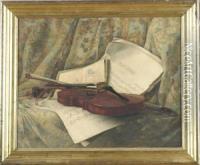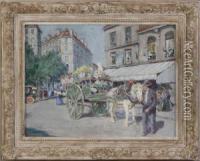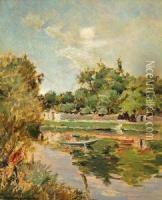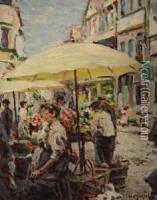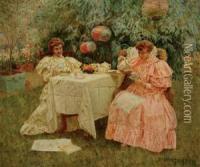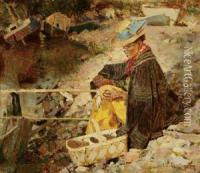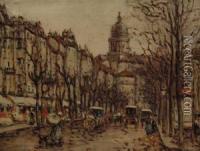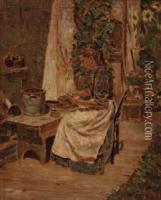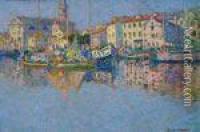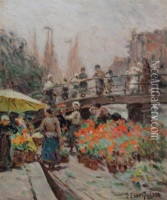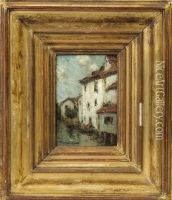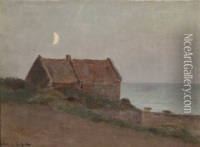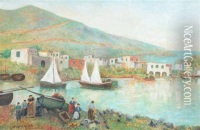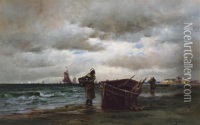Luther Emerson Van Gorder Paintings
Luther Emerson Van Gorder was an American Impressionist painter known for his diverse subject matter, including landscapes, city scenes, and genre paintings. He was born on August 9, 1861, in Preble County, Ohio, and demonstrated a talent for art from a young age.
Van Gorder studied art at the Cincinnati Art Academy under Frank Duveneck, a well-respected artist and teacher of the time. Duveneck's influence is evident in Van Gorder's early work, where the bold brushwork and dark palette are reminiscent of the Munich School style that Duveneck promoted.
In the late 1880s, Van Gorder moved to New York City, where he became part of the vibrant art scene. He continued his studies at the Art Students League and later at the Académie Julian in Paris, which was a popular destination for American artists seeking to refine their skills and be exposed to the latest European artistic trends. During his time in Paris, he was influenced by the Impressionist movement, which is reflected in his subsequent work characterized by lighter colors and a focus on capturing the fleeting effects of light.
Van Gorder traveled extensively throughout his life, drawing inspiration from various locales including Venice, where he painted several notable cityscapes. His works often depicted the everyday life of the places he visited, imbued with the atmospheric qualities of Impressionist painting.
Throughout his career, Van Gorder exhibited at prestigious institutions such as the Paris Salon, the National Academy of Design, and the Pennsylvania Academy of the Fine Arts. His work was well received, and he garnered a reputation as a skilled painter with a keen eye for capturing the essence of his subjects.
Despite his success, Luther Emerson Van Gorder remained relatively modest about his achievements and lived a life dedicated to his art. He passed away on September 29, 1931, in New York City. Today, his paintings can be found in various art collections and continue to be appreciated for their beauty and historical value.

